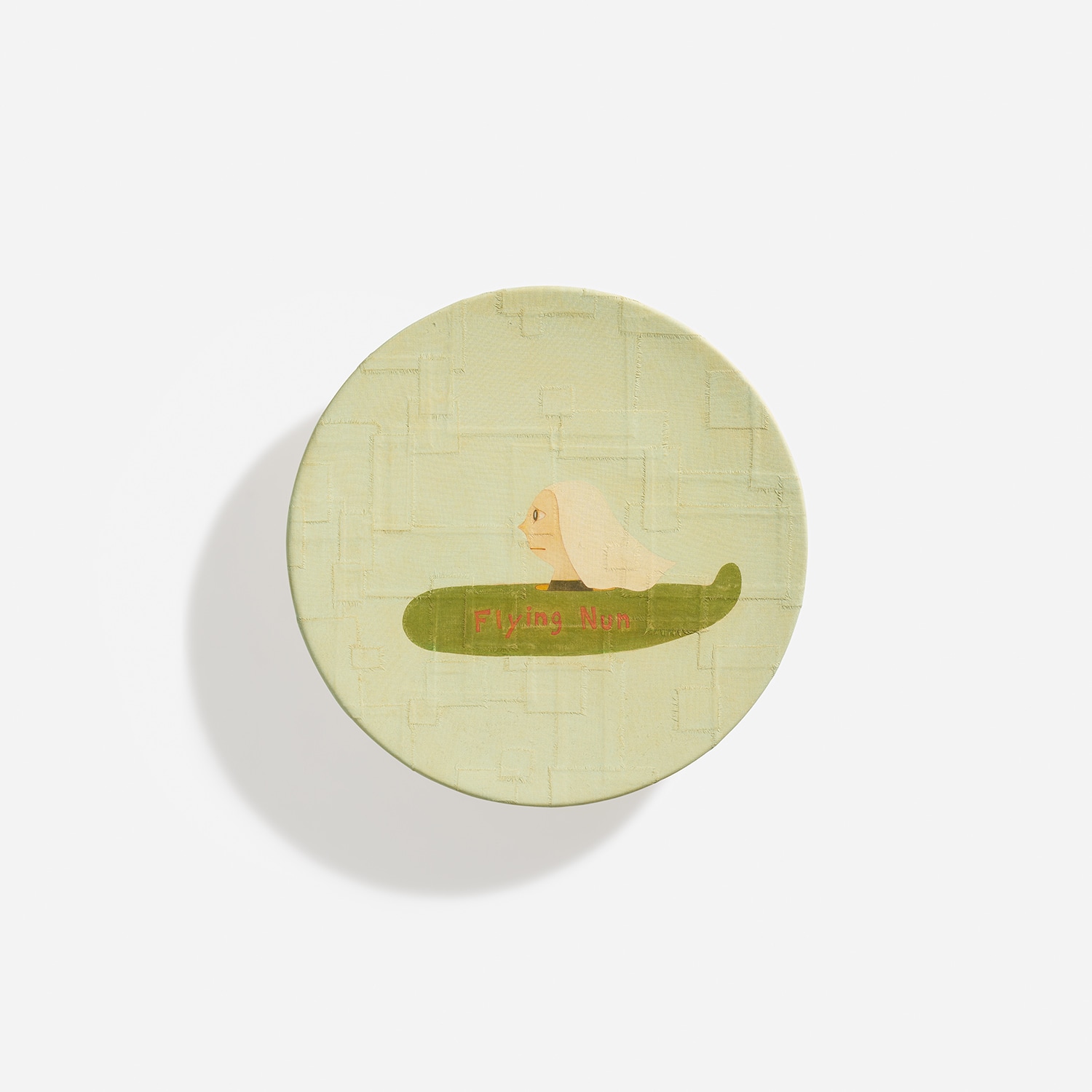
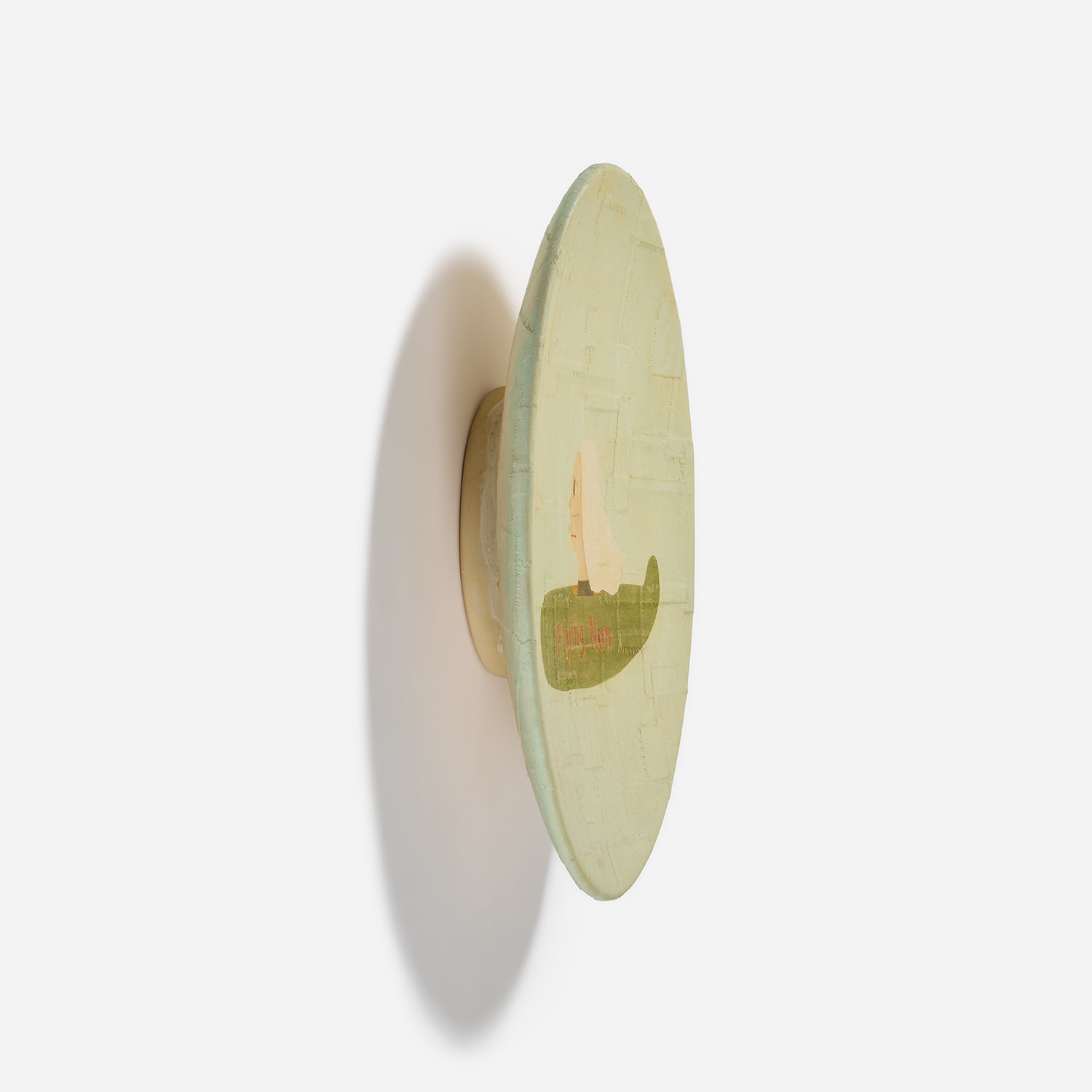
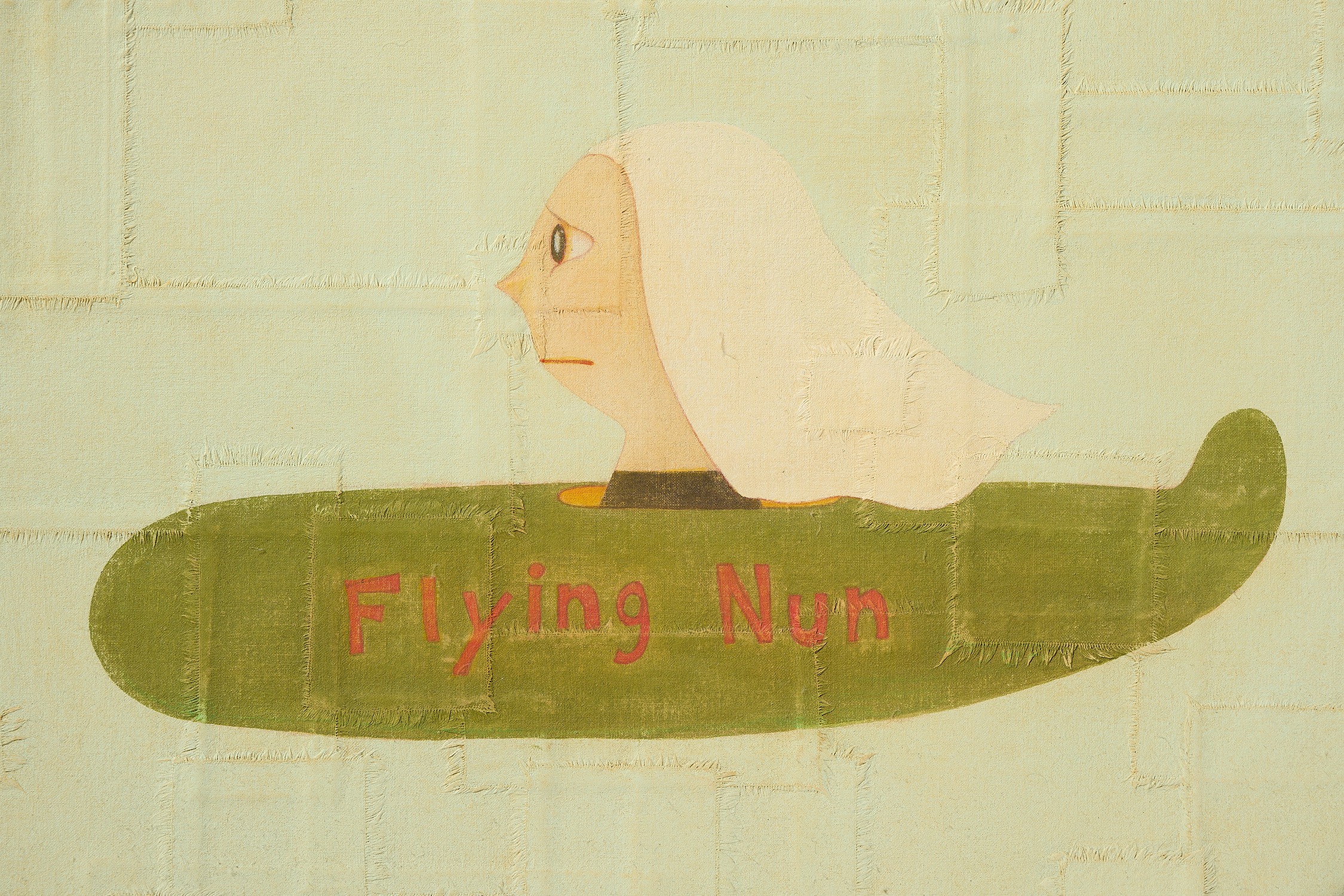
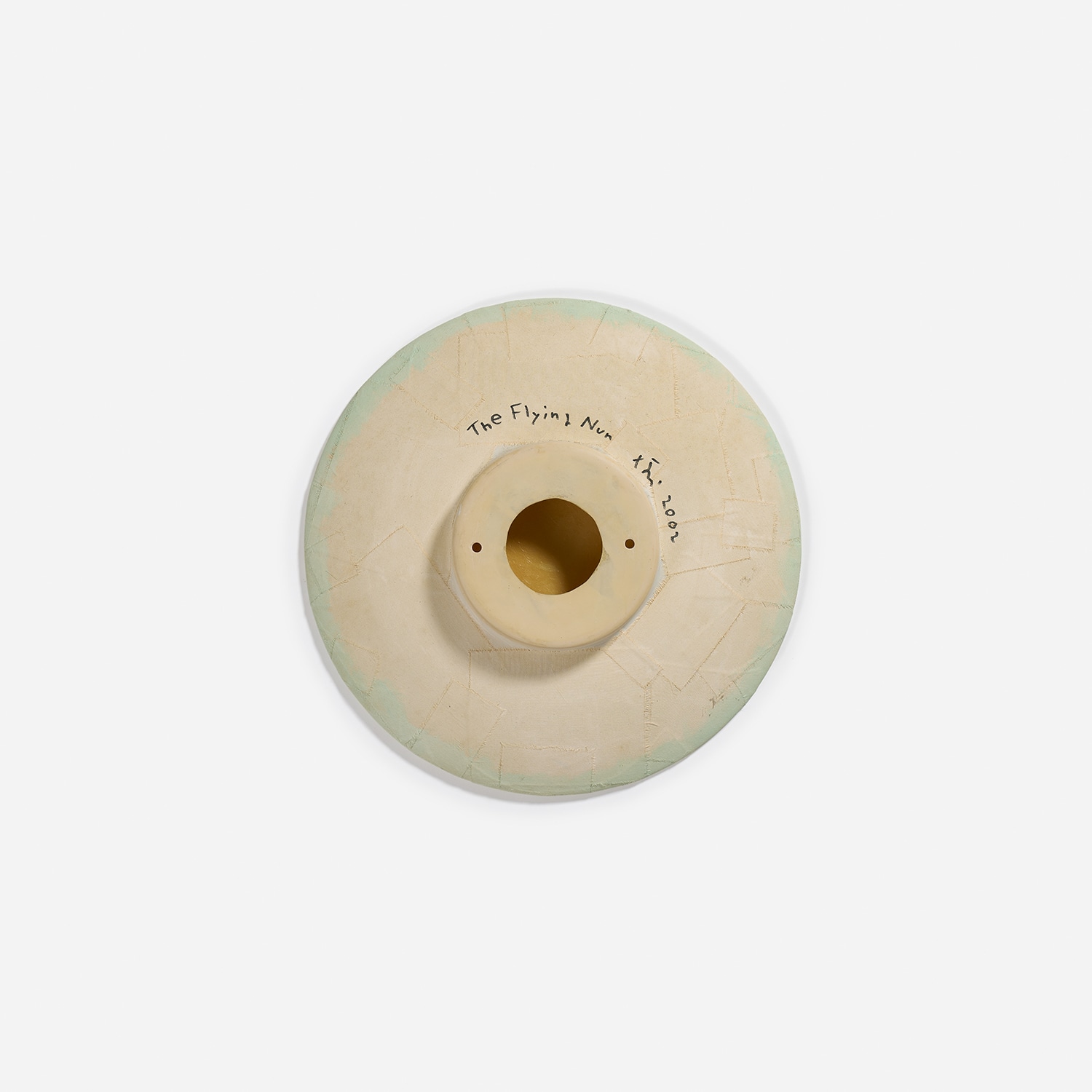
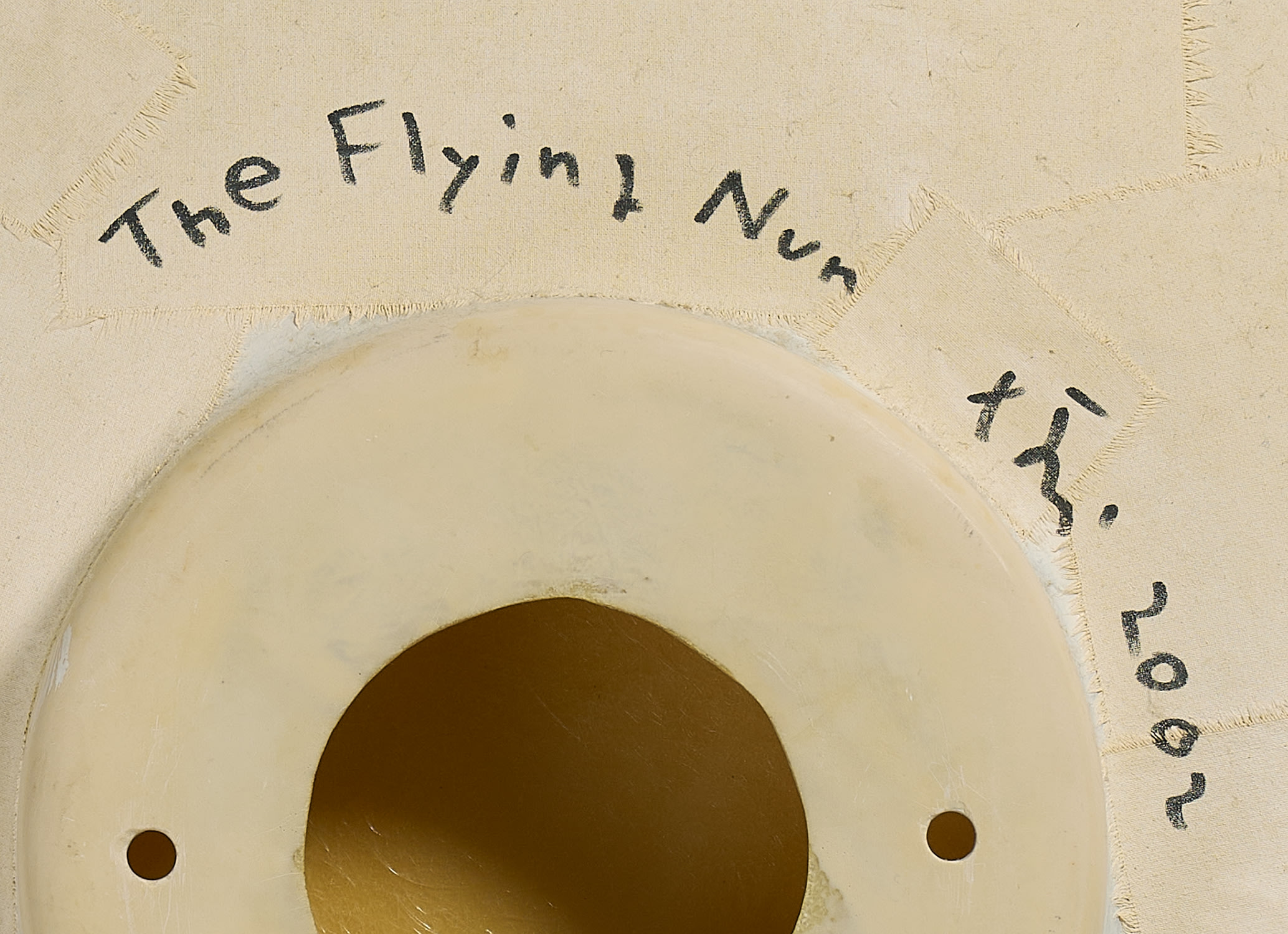





22
Yoshitomo Nara
Flying Nun
signed, titled and dated '"The Flying Nun" Nara [in Japanese] 2002' on the reverse
acrylic on cotton mounted on fibre-reinforced plastic
diameter 54.6 cm. (21 1/2 in.)
Executed in 2002, this work is registered in the Yoshitomo Nara Online Catalogue Raisonné under registration number YNF3061.